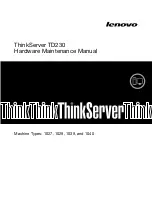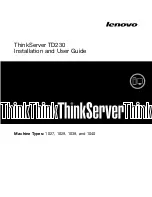
Chapter 3. Virtualization
93
Lx86 creates a virtual x86 environment in which the Linux on Intel applications can run.
Currently, a virtual Lx86 environment supports SUSE Linux or Red Hat Linux x86
distributions. The translator and the virtual environment run strictly within user space. No
modifications to the POWER kernel are required. Lx86 does not run the x86 kernel on the
POWER system. The Lx86 virtual environment is not a virtual machine. Instead, x86
applications are encapsulated so that the operating environment appears to be Linux on x86,
even though the underlying system is a Linux on POWER system.
Lx86 is included in the PowerVM Express Edition, PowerVM Standard Edition, and in the
PowerVM Enterprise Edition. More information about PowerVM Lx86 can be found at the
following Web page:
http://www.ibm.com/systems/power/software/virtualization/editions/lx86/
3.3.5 PowerVM Live Partition Mobility
PowerVM Live Partition Mobility allows you to move a running logical partition, including its
operating system and running applications, from one system to another without disrupting the
infrastructure services.The migration operation takes just a few seconds and maintains
complete system transactional integrity. The migration transfers the entire system
environment, including processor state, memory, attached virtual devices, and connected
users.
A partition migration or move can occur either when a partition is powered off (inactive) or
when the partition is providing service (active).
Partition mobility provides systems management flexibility and improves system availability,
as follows:
Avoid planned outages for server upgrade, hardware or firmware maintenance. Move
logical partitions to another server and perform the maintenance. Live Partition Mobility
can help lead to zero downtime maintenance because you can use it to work around
scheduled maintenance activities.
Meet stringent service level agreements. It allows you to proactively move the running
partition and the applications from one server to another.
Balance workload and resources. Should a key application’s resource requirements peak
unexpectedly to a point where there is contention for server resources, you might move it
to a larger server or move other, less critical, partitions to separate servers, and use the
freed-up resources to absorb the peak.
Optimize the server. Consolidate workloads running on several small, under-used servers
onto a single large server.
System requirements for Partition Mobility
Both source and destination systems must have the PowerVM Enterprise Edition license
code installed.The source partition must be a virtual client and should have only virtual
devices. If there are any physical devices in its allocation, they must be removed before the
validation or migration is initiated. An NPIV device is considered virtual and is compatible with
partition migration.
Note: IBM plans for PowerVM Lx86 to support POWER7 systems in second quarter 2010.
Note: Partition Mobility is only available with the Enterprise PowerVM Edition.
Содержание PS700
Страница 2: ......
Страница 8: ...vi IBM BladeCenter PS700 PS701 and PS702 Technical Overview and Introduction...
Страница 14: ...xii IBM BladeCenter PS700 PS701 and PS702 Technical Overview and Introduction...
Страница 142: ...128 IBM BladeCenter PS700 PS701 and PS702 Technical Overview and Introduction...
Страница 147: ......
















































